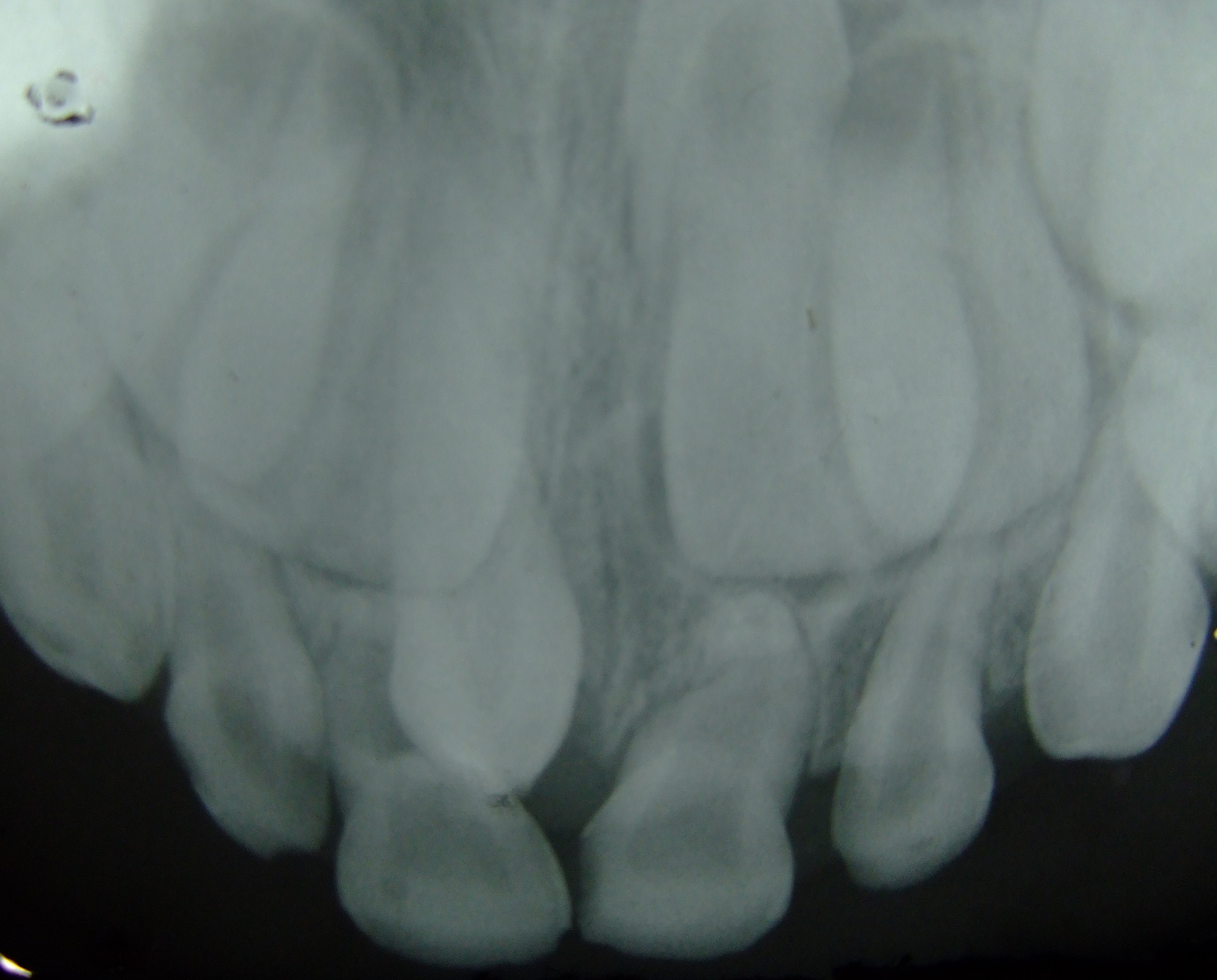Hyperdontia
| Hyperdontia | |
 | |
|---|---|
| Supernumerary teeth at premaxillary area | |
| ICD-10 | K00.1 |
| ICD-9 | 520.1 |
Editor-In-Chief: C. Michael Gibson, M.S., M.D. [1]
Hyperdontia is the condition of having supernumerary teeth, or teeth which appear in addition to the regular number of teeth. The most common supernumerary tooth is a mesiodens, which is a mal-formed, peg-like tooth that occurs between the maxillary central incisors.
There is evidence of hereditary factors along with some evidence of environmental factors leading to this condition. Many supernumerary teeth never erupt, but they may delay eruption of nearby teeth or cause other dental problems. Molar-type extra teeth are the rarest form. Dental X-rays are often used to diagnose hyperdontia.
A similar condition is hypodontia, in which there are fewer than the usual number of teeth.
Hyperdontia is seen in a number of disorders, including Gardner's syndrome and cleidocranial dysostosis where multiple supernumerary teeth are seen that are usually impacted. It is suggested that supernumerary teeth develop from a third tooth bud arising from the dental lamina near the permanent tooth bud or possibly from splitting the permanent tooth bud itself. Supernumerary teeth in deciduous dentition are less common than in permanent dentition.
Template:Oral pathology
zh-min-nan:To-khí-chèng
he:שן עודפת
hu:Hyperodontia